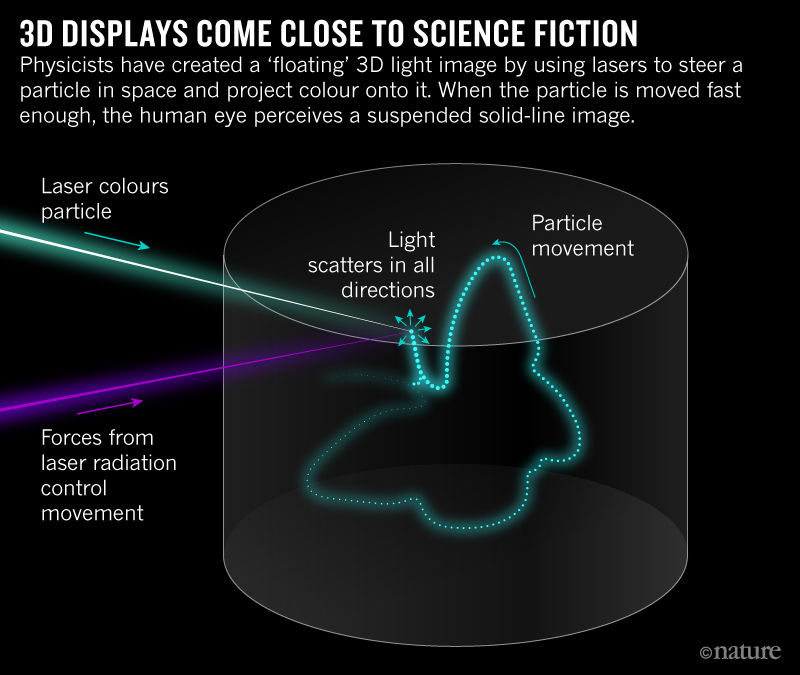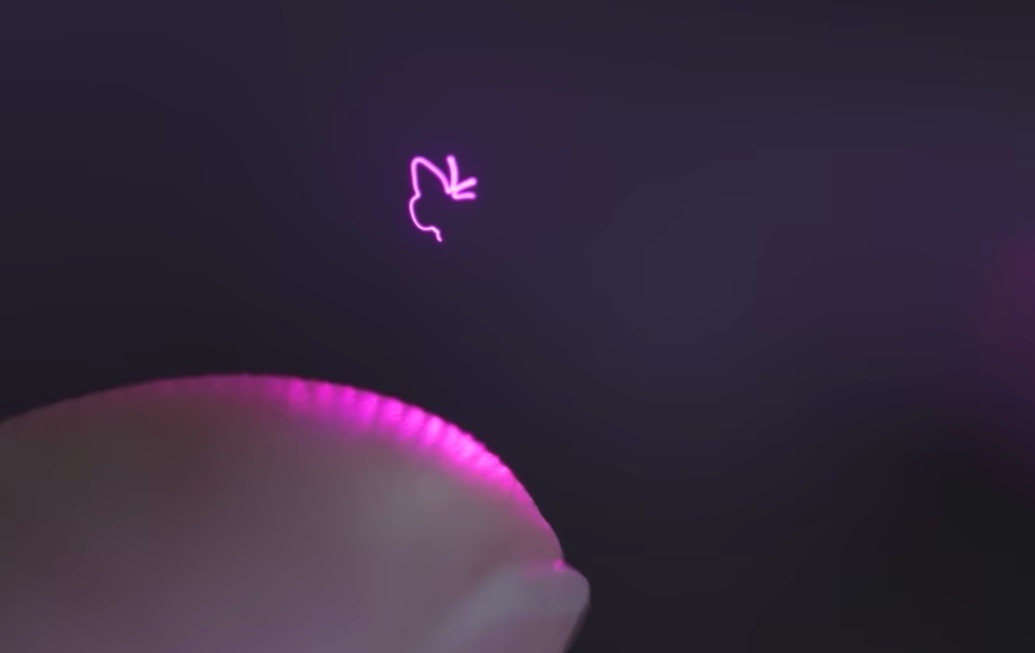Physicist Daniel Smalley has dreamed up a way to produce volumetric 3D images that appear to float above their source.

From: Nature
As Nature explains in an article describing the research, Smalley’s technology comes about as close as anyone could hope to the holograms imagined in Star Wars (and, as physicists, you can expect them to know). As Miles Padgett, an optical physicist at University of Glasgow explains, “This is doing something that a hologram can never do—giving you an all-round view, a Princess Leia-style display—because it’s not a hologram.”
Nature compares the technology to a “high-speed Etch a Sketch.” First, the scientists use “near-invisible” laser beams to capture a single particle of cellulose. By heating the particle in different ways, they can direct it to move through space. A second set of lasers lights the particle up in different colors.
Since the particle can move faster than we can register it, the tool can create solid lines in space. In an unexpectedly poetic description, Nature explains the effect as being like “a sparkler moving in the dark.” By changing the image quickly, the scientists create the illusion of a moving image.
The display, somehow, can be overlaid on real objects, and beats out holograms by offering viewing from any angle.
Now, downsides: The images are really small, really just a few mm across. Right now, the team has only been able to produce a stationery butterfly and a moving spiral line.
Next steps are to speed up the particle, and enable the movement of more than one at a time, and, of course, to figure out how to get right of the ghostly glow.
For more information, dig into the paper here.






